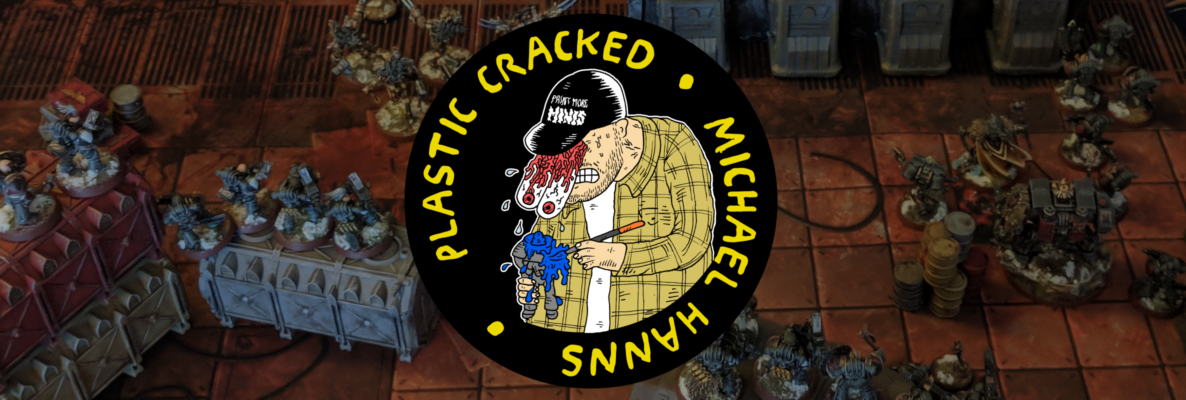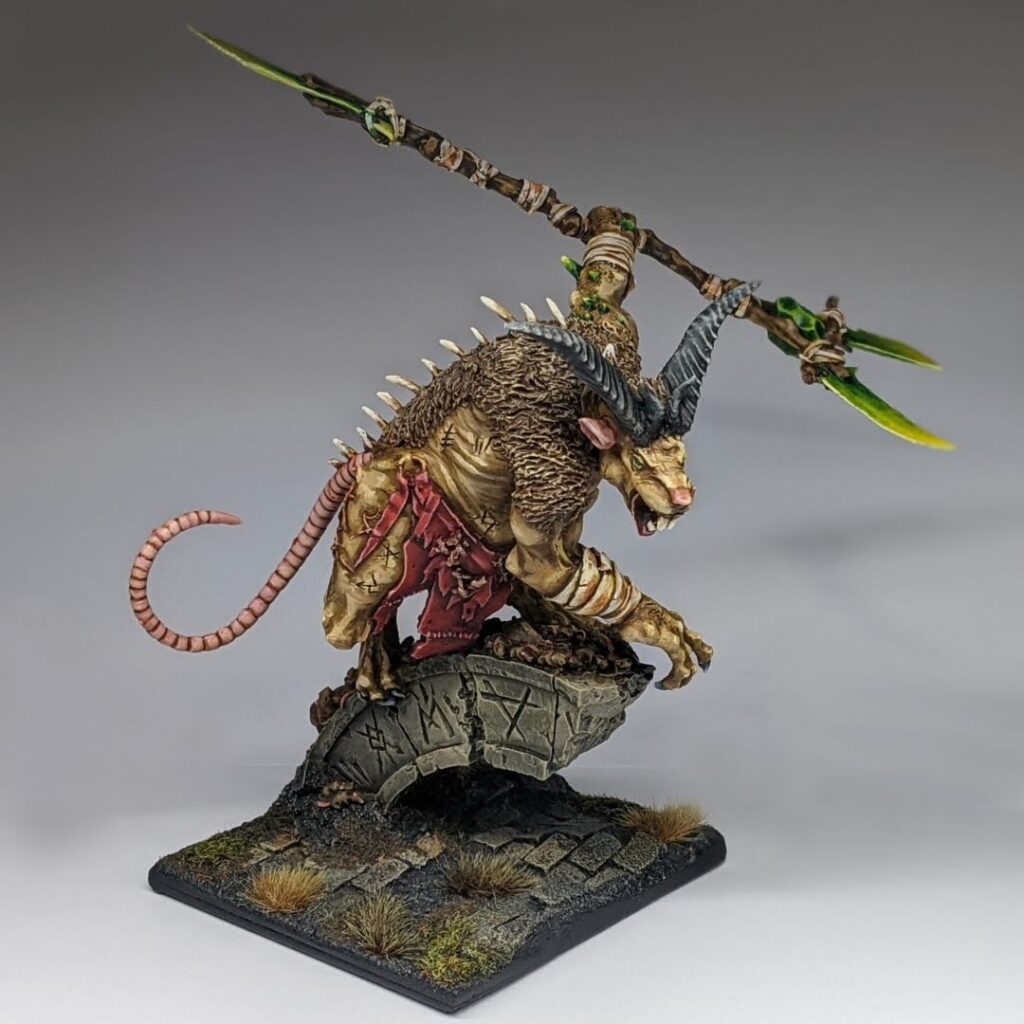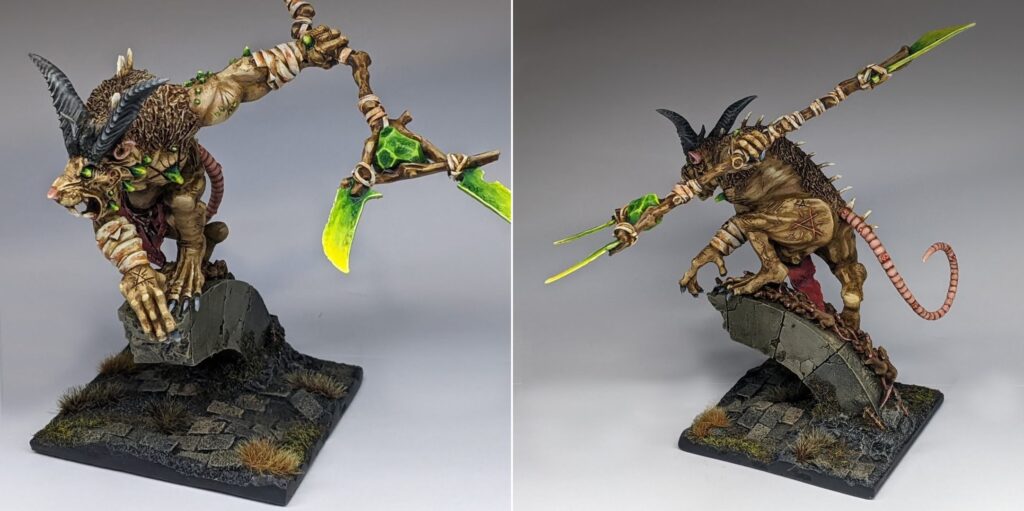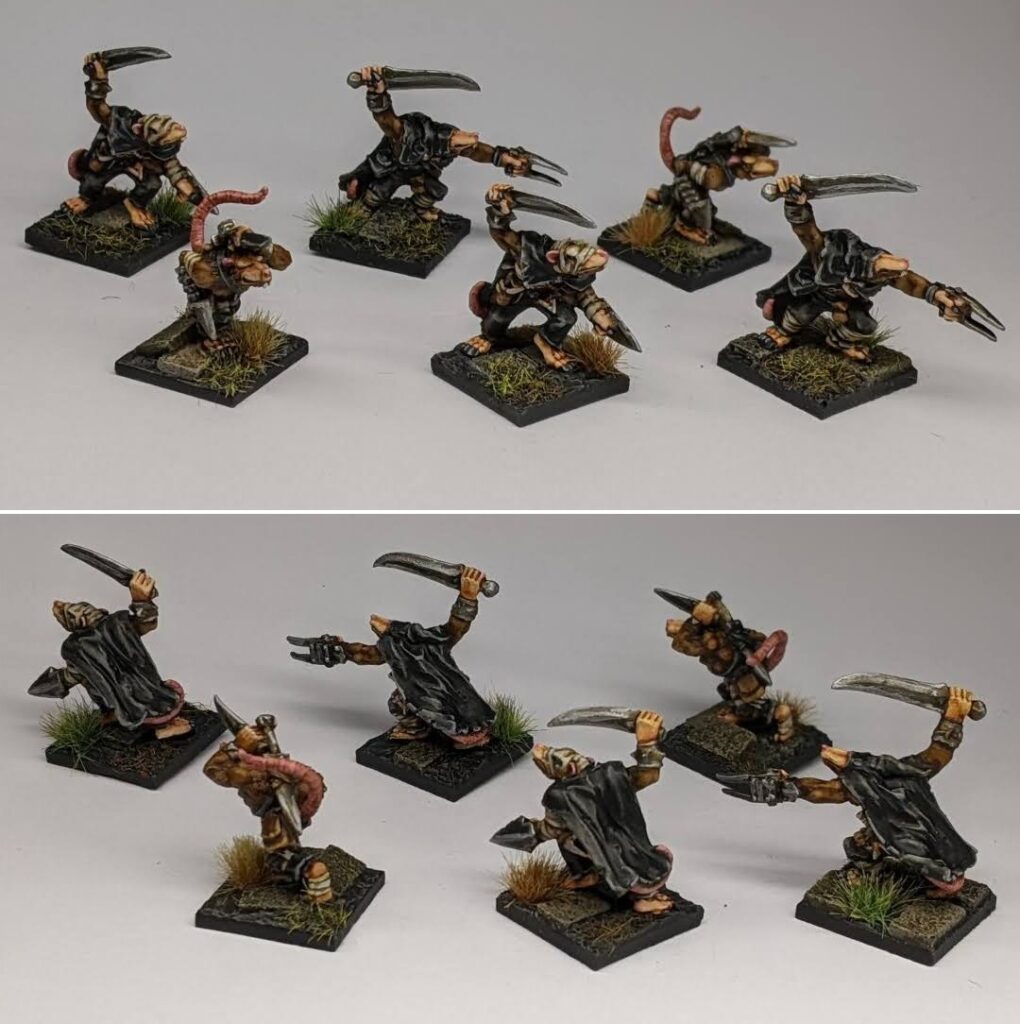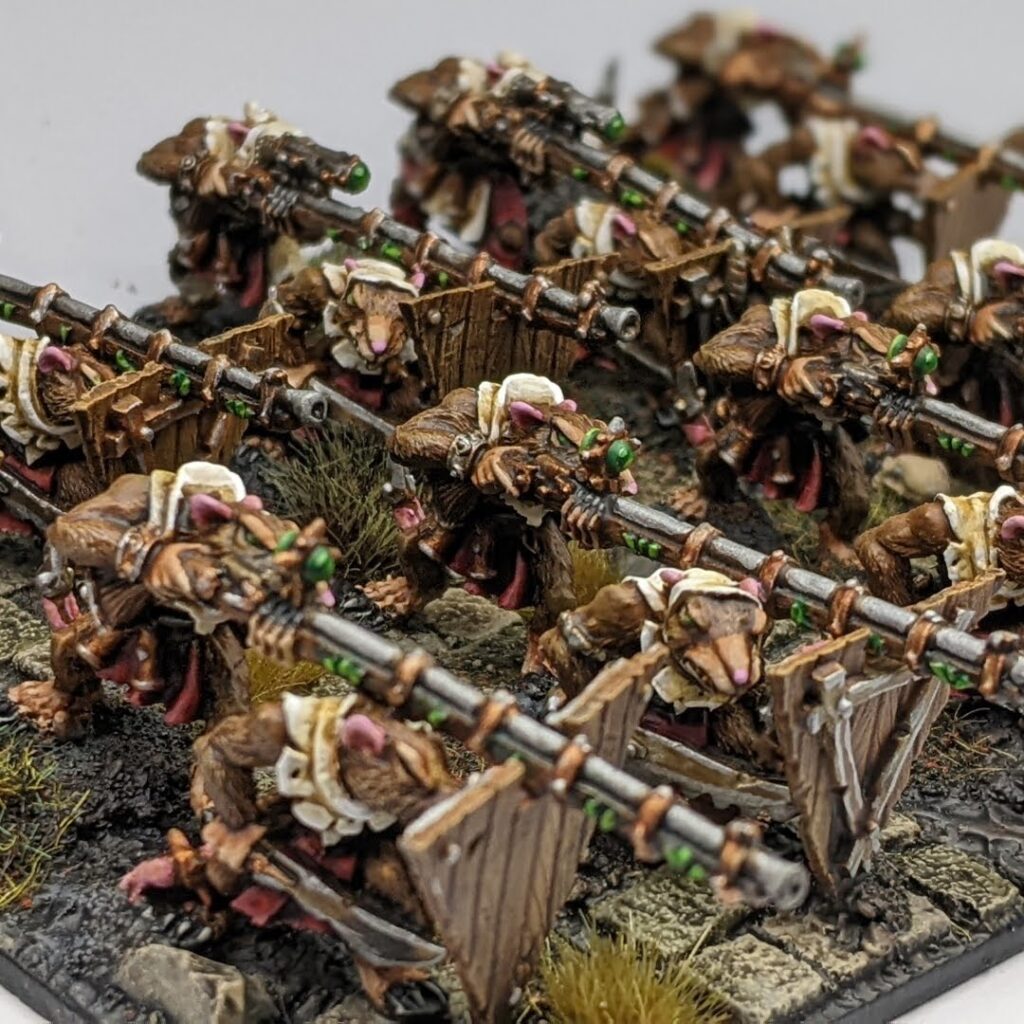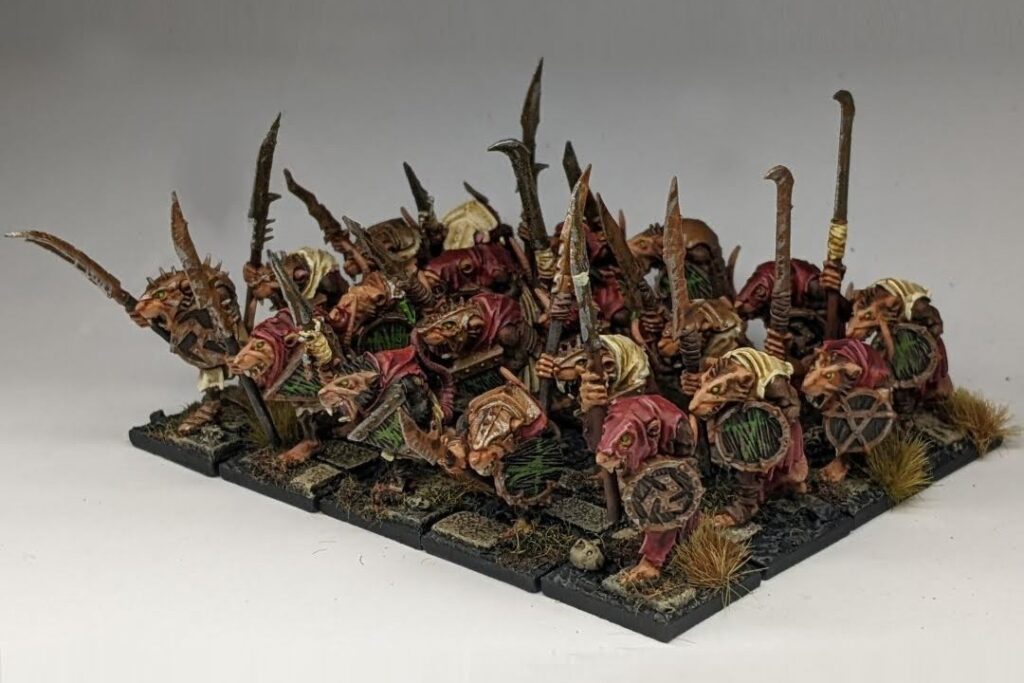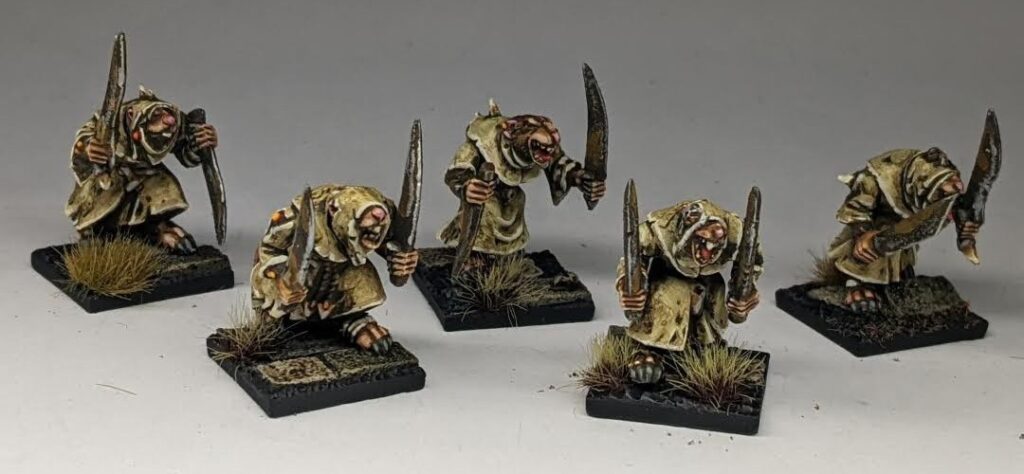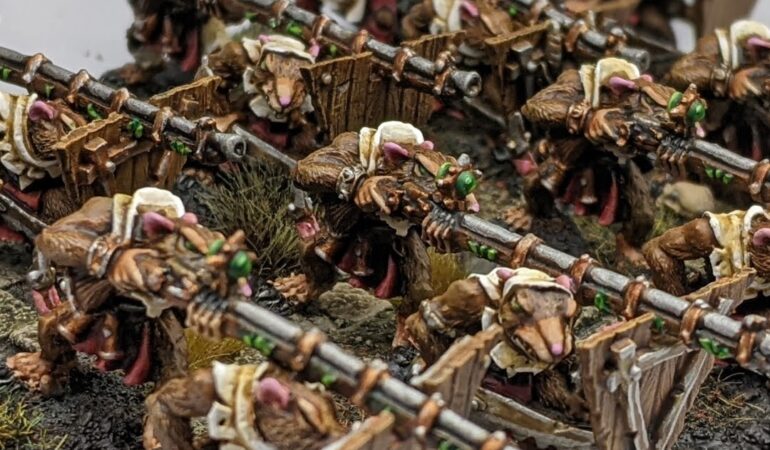
It’s the damnedest thing.
More often than not, as soon as I’m one or two units into a new project, I find myself getting restless. The ‘new and shiny’ high may last a little longer on some projects than others – but it’s a question of ‘when’, not ‘if’. Eventually, you’re left with the cold realisation that the ‘new models’ dopamine hit is over, and you’ve now got to build and paint them if you want the next one.
Not wanting to leave a trail of unfinished projects behind me, I tend to just push through until I reach an acceptable milestone. As soon as I can possibly call the project ‘finished’, I throw myself headlong into the next big thing. New is good. New is exciting. New offers new challenges, problems to solve, army lists and lore videos to check out between painting sessions.
Lately, however, I’ve found myself drawn not to new army projects, but to.. well, whatever it was I was doing before.
I don’t understand it. As little as a month ago, the mere suggestion of painting more Clanrats would have taken a decade off my lifespan. After a couple of months painting singles for D&D, however, it’s suddenly the most vital and exciting thing I could add to my collection.
This is hardly the first time I found myself ready and eager to return to a ‘finished’ project, but unlike the Dreaded Sacresants, I managed to keep up my momentum for longer than a single unit this time around.
The wheels were kinda sorta already in motion for this one back in October. While deep in the process of rebasing and painting some new Skaven miniatures for part one, the thought occurred to me that I might want a Verminlord at some point. I’ve always liked the look of the ForgeWorld Verminlord a lot more than the plastic/End Times variants and – being both a Heresy and a Middle-earth player – I’m all too aware that niche miniatures such as these can end up vanishing from the catalogue at any given moment. So, I did what any red blooded wargamer would do and decided to order one sooner rather than later.
Eventually, December came around and I had given myself a very relaxed goal for the month – finish painting the minis for the D&D one shot. This amounted to three or so human sized character models painted to a nice gaming standard – which isn’t a whole lot of painting for a month, but I didn’t want to set myself up for failure. December is so often loaded with social engagements and family functions, and I’d been painting at a pretty glacial pace for the past couple of months as is. I’d planned to hit the ground running with a New Year, New Army project in January, so I needed to clear the pipelines. No distractions, nothing left half finished.
To my delight, those last three D&D minis went pretty quickly and I found myself a free agent not even halfway into December. So, I gave myself a bit of a leg up on the new year and assembled the guts of my new army project. I considered making a start on the painting, but it seemed like too long term a project for halfway into December. Instead, I looked to my backlog for things to finish off before the new year – some instant gratification. The standout being, of course, my ‘new’ Verminlord.
Now, there are a few things of note regarding the construction of this monstrosity. The first and probably most noticeable of which is that is that his horns are absolutely non-standard for this particular miniature and, in fact, come from the plastic Verminlord kit. I’m really happy with how these look – they give the model a bulkier, more intimidating presence than the more delicate Loki style horns that the miniature comes with as stock. I’d love to say that this conversion is my original vision for the miniature, but the main reason for this conversion was that ForgeWorld shipped him to me with one of the horns missing. Unfortunately, by the time I’d noticed this, it was a couple months after I’d made the order and I’d already clipped a bunch of pieces off of the casting gates. I also made the rookie mistake of throwing away the ‘checked by’ slip that came in the bag for reasons (???), so I wasn’t holding out much hope that they would ship me my replacement horns. Instead, I opted to pick up a set of plastic Verminlord horns from eBay for a fiver or something in the meantime. Eventually, ForgeWorld did get back to my email and send me a replacement, but by this point I already had the replacement horns – why butcher a perfectly good replacement kit, eh?
Another notable change I’ve made to my Warpgnaw Verminlord is the addition of some sculpted fur on his back. I can never really make my mind up whether I like ForgeWorlds hairless approach to Skaven miniatures or not, so I decided to give him a little fur on his back to keep him warm during the winter months. This was dead simple to achieve – green stuff, rolled flat and pressed up against his back and shoulders, and then pulled at for a good 10 or 15 minutes until it looked.. well, furry. Easy peasy, and in my opinion, helps make the Verminlord look that little bit more ratty without covering up too much of the gnarly detail and scarring on the skin.
Finally, the base took just a little bit of effort to get working. I put him on a 75x75mm base, such that I could use him as the Demonspawn in Kings of War or a Ruinous Dictator in 9th Age. Unfortunately, Daemonscapes (the manufacturer of the resin bases I use for this project) don’t seem to do any bases in this size, so I had to cut one out from a 100x150mm base. I did this by cutting the rough size using a small saw, followed by some careful filing until the base had smooth flat edges at exactly 75mmx75mm. A bit laborious given the hard resin that Daemonscapes cast their bases in, but not too difficult overall.
With construction finished, it was time to slap some paint on and I must say, this miniature was an absolute joy to paint. The detail was crisp and chunky (with the exception of the rats on the scenic base, which were a little ‘blurry’ in my opinion) and – as far as Monster miniatures go – most of the model was surprisingly accessible and easy to get at with a brush.
After laying down some basecoats – Heavy Skintone for the skin, Beasty Brown for the fur and staff, a mix of Squid Pink and Rosy Flesh for the tail, Mutation Green for the warpstone, Heavy Red for the loincloth and Elfic Flesh for the spines and wrist wraps – I set to work ‘sketching’ out the highlights on the skin. This is my defacto method for highlighting large models like this and in a nutshell, it involves throwing down several messy layers and highlights before moving onto the wash step. I start from a nice even coat of the base colour, then hastily paint on smaller and smaller layers – mixing a little Elfic Flesh into the base with each successive layer. I generally push the highlights a little beyond the level of contrast I’m aiming to achieve on the final model at this point, as the next layer will darken the whole model. Once I’m finished ‘sketching’ the highlights, I hit the whole surface area with a slightly watered down wash of Seraphim Sepia. This not only shades the recesses, but it also helps to blend the layers of paint together and smoothens out my transitions for me a little bit. After the wash has dried, I hit the edges with another edge highlight to sharpen things up again and push the contrast exactly where I want it. If the skin still looks a little ‘sketchy’ and rough, I repeat the whole wash/highlight process until I’m happy with how it looks. I find this method helps achieve a nice highlight that ‘pops’ on the tabletop, while also producing some nice texture to the paints finish thanks to several competing layers of brushstrokes.
The tail and ears were painted similarly – only using a Squid Pink/Rosy Flesh mix as the base, mixing a little Elfic Flesh in and painting a ring around each ‘segment’ before washing with thinned Seraphim Sepia. As a final touch, I painted a little dot of Elfic Flesh onto the pimples and pustules and then applied a very thin glaze of Bloodletter Red over the top to give it an angry, inflamed look. Similarly, Bloodletter Red was thinly glazed over the scarring on his hip.
The rest of this miniature was pretty much by the numbers, with the exception of the Warpstone. This being such a big, awesome centrepiece miniature with an admittedly huge amount of Warpstone present, I wanted this stuff to really pop. To achieve this, I started from a basecoat of Mutation Green and layered with Goblin Green before washing the miniature with Biel Tan Green wash. Once dry, I set about highlighting this shaded base with a mix of Goblin Green and Bald Moon Yellow, each layer including increasingly more Bald Moon Yellow. The trick here is that using Yellow as a highlight on the green gives you a very rich, saturated lime green highlight, as opposed the pale, minty green that adding a white or cream gives you. Additionally, Bald Moon Yellow in particular has absolutely atrocious coverage, so once you work up to using more Yellow than Green, any one layer isn’t going to have too much of an effect. If you’re willing to sit there applying about 20-50 layers, you can quite easily build up a decently smooth transition to pure yellow without futzing around with wet blending.
Once I was more or less happy with the transition I’d created – and this doesn’t need to be seamlessly smooth, this is warpstone, not silver – the finishing touch was a little Biel Tan Green in the recesses. This was followed by a fine edge highlight with a 50:50 mix of Elfic Flesh and Bald Moon Yellow to really pick out the edges or the points. Easy.
Besides the red, the wraps, the claws/horns and the base (which were pretty run of the mill and don’t really warrant discussion), that was pretty much it for the Warpgnaw Verminlord.
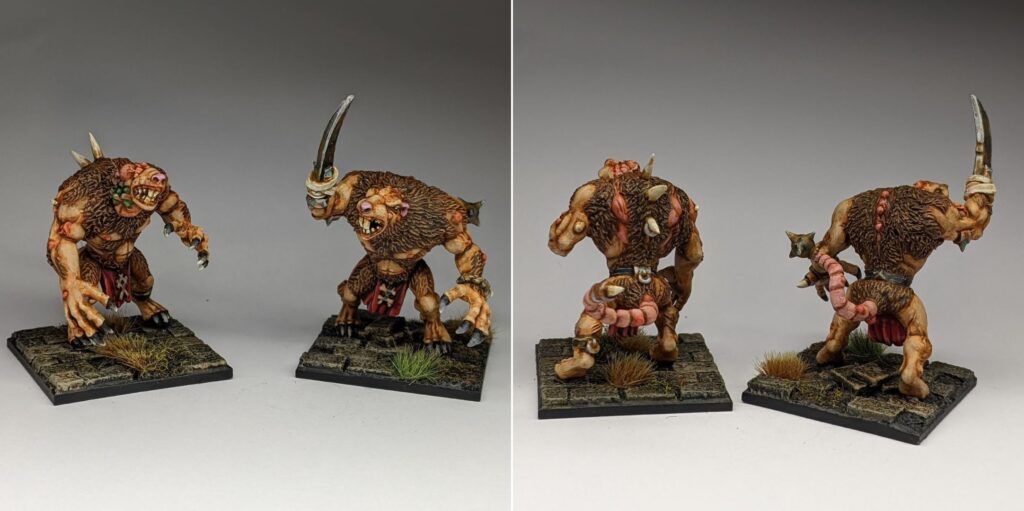
Perhaps unsurprisingly however, the completion of this Warpgnaw Verminlord absolutely blasted open the floodgates for more Skaven before the new year began. The first of these were a pair of Rat Ogres and another half a dozen Gutter Runners.
See, not long after I pulled the trigger on the Verminlord, I started thinking about potential use cases for the model in gaming. I couldn’t use him in 6th Edition1, which meant this army had to be playable for 8th ed, Kings of War or 9th Age – which meant bigger units across the board. While most of my army was playable (if not necessarily optimal), my two biggest problem cases were Rat Ogres and Gutter Runners. Rat Ogres came in units of 6 minimum in 9th Age, while the equivalents of Gutter Runners for T9A and Kings of War came in 10 man squads minimum.
At this point, I had a total of 3 Rat Ogres (and Boneripper) and 6 Gutter Runners. I figured I could add another two Rat Ogres and run Boneripper as a ‘Champion’ in those games, while doubling my Gutter Runners just seemed like a universally good move. And so, I did just just.
While part of me is just thrilled that I’m still able to buy these classic pewter miniatures directly from Games Workshop, these next 6 Gutter Runners highlight a pretty annoying drawback about these ‘web store exclusive’ blister pack items. I have fond memories of purchasing the metal models for my army in my local Games Workshop back in the day, rifling through the blisters on the rail, trying to find the best combination of sculpts. Nowadays, you’re kind of just stuck with whatever poses they decide to ship you. It’s almost like a blind buy pack, like those Space Marine Heroes.
In this case, I received two identical blister packs – a little less variety this time around than my previous six (which at least included one of the guys holding a throwing star). Still, at least they’re still remotely fairly priced. The Poisoned Wind Globadiers are currently priced at an eye watering £10 a model. Seriously, if I spent £100 on a unit of 10 of those and only received 2 of the 3 poses, I would be so mad.
Okay, so, it’s about the 20th of December. I’ve cleared out the last pressing gaming minis before the new army project. My WHFB 6th army is now technically playable in Kings of War at around 2000pts, and I’ve cleared out my backlog of Skaven purchases from October. My Christmas holidays have now officially begun and I have an abundance of free time for the first time in months. Now would be a great time to get a leg up on that New Year, New Army project, eh?
…
Alternatively, how about a brand new unit of Warplock Jezzails?
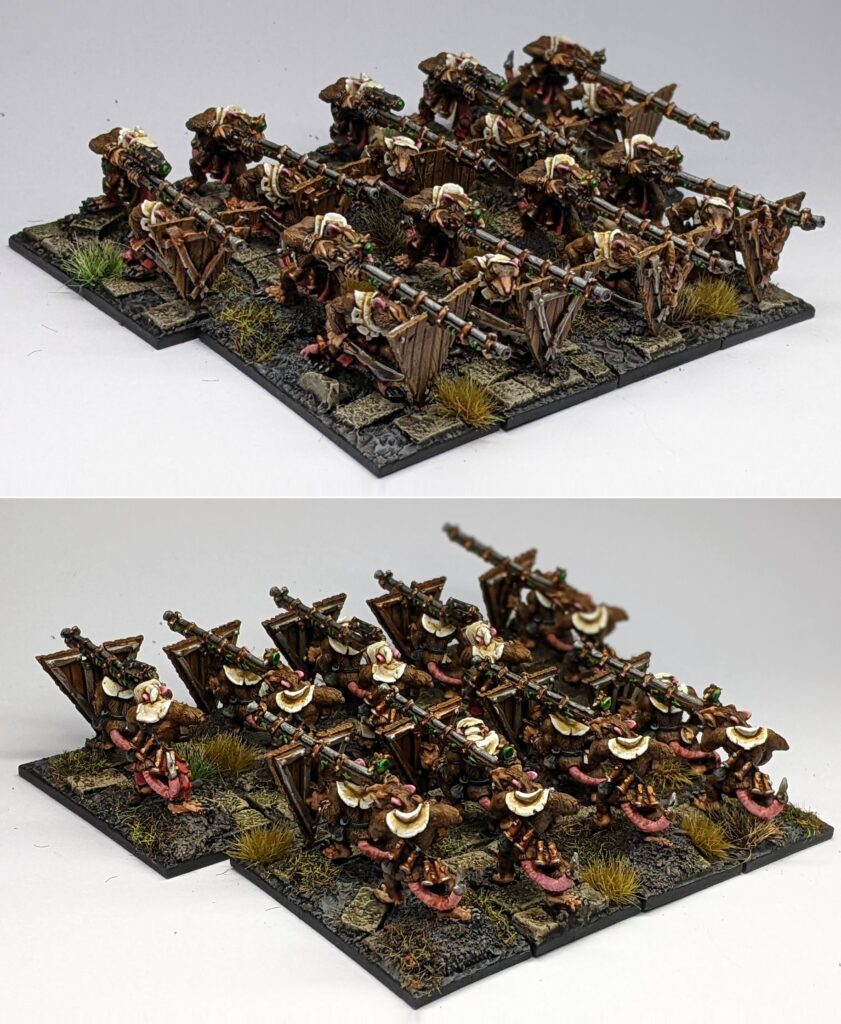
Like I said, it’s the damnedest thing. Two months ago, having this unit on my backlog would have crushed my spirit. Somehow, now that the army is ‘finished’ – and with a little bit of a palette cleanser in between – they become the most essential miniatures in the world and I absolutely have to paint them now.
To be fair though, Warplock Jezzails are something of a Skaven staple. They’re one of those cool, iconic Skaven units that I’ve always wanted, but always felt too bogged down on painting the battleline to get around to. I’ve wanted a nice big unit of these guys since I was a spotty kid reading the 6th ed Skaven army book for the first time, lamenting there’s no way I could afford all of those metal after all those boxes of Clanrats. C’mon, who doesn’t love teams of rat-people snipers packing massive long range rifles loaded with magical ammunition?
Plus, bonus – I can now claim to have at least one of everything from the Skaven 6th Ed Special/Rare choices, which feels like a nice milestone to have reached.
Not much to say about the paint jobs on these, other than this unit being – surprisingly – one of the biggest, most involved painting projects of this installments. 9 miniatures doesn’t seem like too much to batch paint until you realise that every one of these models is really two – two tails, two sets of ears, two belts and pouches and bells and other little maguffins. And a big ol’ rifle. AND a big ol’ shield. Phew.
One thing I would like to add is that these miniatures really do look way better in person than they do in photographs – and I don’t mean the paint job, I meant the models themselves. There’s something about the angle that these minis are always photographed at on GW’s web store and in army books that never seems to do these little guys justice. I’m not saying they hold a candle to the newer Clanrat designs – they do have a little bit of that monkey-rat vibe that the old Clanrats had going on – but they’re closer to the Gutter Runner end of the spectrum than the Night Runner end. Besides, the jezzail and pavise itself still look the absolute mutts nuts. The equipment itself is by far the biggest reason I didn’t bother converting my own from Stormvermin and Skitarii. I love how these guys look as a unit, I really do.
Okay, we’re just about coming to the end of my latest wave of Skaven reinforcements. The last couple of units I added were another 20 Clanrats and another 5 Plague Monks.
As I was approaching the end of the Jezzails, I realised I still had a little bit of time left on my hands before the new year and found myself ordering a few more models to beef up a couple of my smaller units. This batch of 20 Clanrats helps push both of my Spear units up to 40 (the same size as the Sword/Shield unit), while the five Plague Monks below boosts that unit up to 30.
The Clanrats are – as with most of my Clanrats – eBay miniatures that have had a little TLC. Fortunately for me, this batch didn’t require any mould line cleanup, so I ‘only’ had to replace a bunch of sword arms with Spears, repaint the eyes, repaint some of the robes/armour that didn’t match the red/cream scheme for my army, add a few extra highlights here and there and, of course, rebase them. These guys came with those funky little green freehand Skaven symbols on their shields, which I decided to keep – it looks good and it matches the green eyes and warpstone bits of my other Clanrats.
I’m still not entirely convinced that 3×40 blocks of Clanrats and a 30 block each of Stormvermin and Plague Monks are ‘enough’ for 8th Edition WHFB or The 9th Age, but every little helps. I’m still dreading the day I need to add Skaven Slaves to the army.
That’s a problem for another day however, as that’s it for this instalment of Vermintide. It feels good to be back on the horse, and I’m really pleased with the amount of extra stuff I managed to squeeze in for the furry little gits before beginning the big New Year, New Army project in earnest. I had a lot of fun painting these models, even more than I did the first time around.
If I’ve learned one thing from this hasty return to my Skaven army, it’s that I’m not finished adding to this army – not by a long shot. The addition of the Warpgnaw Verminlord has opened the floodgates for all sorts of other 7th and 8th edition units such as Hell Pit Abominations and Doomwheels. They’re coming. God help me, they’re coming.
Before any of that however, I’m finally starting to see some real progress with my New Year, New Army project – the Riders of Rohan – so hopefully I’ll have something to show for that soon. Additionally, I’ve managed to chew off the first (and most intimidating) model of a warband for 54mm Inquisitor, which I’m looking forward to sharing with you all soon.
In the meantime, thanks for reading and happy wargaming!
1 Or 7th edition, for that matter. While Verminlords had returned in 7th, these were far smaller than the Warpgnaw from ForgeWorld or the plastic End Times Verminlord variants.
